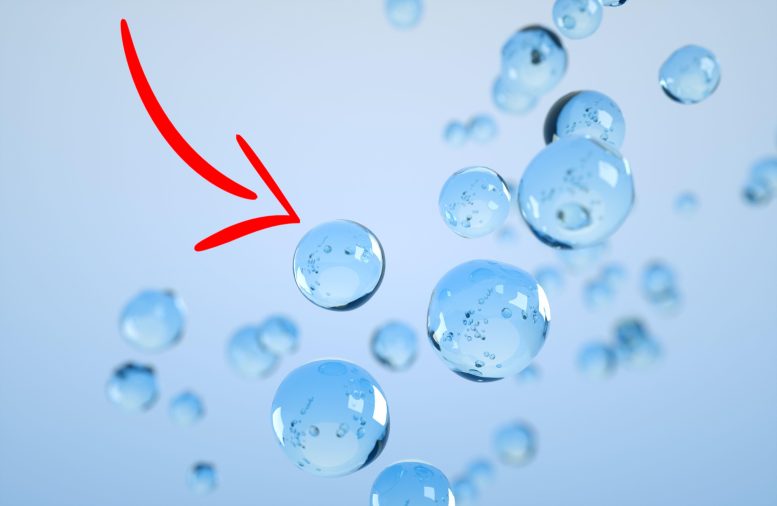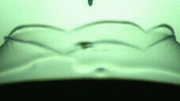
Five centuries ago, Leonardo da Vinci observed air bubbles deviating from a straight path in a zigzag or spiral motion. However, the cause of this periodic motion remained unknown until now.
Researchers from the universities of Seville and Bristol have solved the mystery surrounding the unsteady path of an air bubble rising in water.
Professors Miguel Ángel Herrada of the University of Seville and Jens G. Eggers of the University of Bristol have uncovered a mechanism that explains the erratic movement of bubbles rising in water. The findings, published in the prestigious journal Proceedings of the National Academy of Sciences, could provide insights into the behavior of particles that fall between solid and gas states.
Leonardo da Vinci observed five centuries ago that air bubbles, if big enough, periodically deviate in a zigzag or spiral from a straight-line movement. However, no quantitative description of the phenomenon or physical mechanism to explain this periodic motion had ever been found.

Leonardo’s sketch showing the spiral motion of an ascending bubble (from his manuscript known as the Codex Leicester). Credit: Universidad de Sevilla
The authors of this new paper have developed a numerical discretization technique to characterize precisely the bubble’s air-water interface, which enables them to simulate its motion and explore its stability. Their simulations closely match high-precision measurements of unsteady bubble motion and show that bubbles deviate from a straight trajectory in water when their spherical radius exceeds 0.926 millimeters, a result within 2% of experimental values obtained with ultrapure water in the 90s.
The researchers propose a mechanism for the instability of the bubble trajectory whereby periodic tilting of the bubble changes its curvature, thus affecting the upward velocity and causing a wobble in the bubble’s trajectory, tilting up the side of the bubble whose curvature has increased. Then, as the fluid moves faster and the fluid pressure falls around the high-curvature surface, the pressure imbalance returns the bubble to its original position, restarting the periodic cycle.
Reference: “Path instability of an air bubble rising in water” by Miguel A. Herrada and Jens G. Eggers, 17 January 2023, Proceedings of the National Academy of Sciences.
DOI: 10.1073/pnas.2216830120









I recall a few days in school when I (might have been) pondering a similar problem involving carbonated soda. The result of those sessions was an instructor asking me, in a loud voice if “I was on drugs?”
TRULYTRUE TRUE, I agree with you completely absolutely and I agree with your perspective
TRULYTRUE TRUE, this is an easy thing to crack, the reason for the movement is, the greater universe is moving in a BRAIDED MOTION, thus, everything inside is also condemned to this LONG DRAWN OUT PERPETUAL MOTION.
I do not think it is condemnation, and seems braided – I think it is mostly currents of vortex shedding of which you speak.
Excellent article regarding new scientific explanation and I would have liked a diagramatic representation of this new science.
When water goes down a drain it turns the same direction so maybe when air rises in water their is a similar force but different reactions that are unrelated by action cause it’s a different dynamic
Excellent
I am so relieved they were able to solve this “paradox”. While spending no less than a couple of hundred thousands dollars to do so, I’m sure. Finally, all is right with the world, and we can live better lives knowing that this mystery has been laid to rest.
We used to see this phenomena when we exhaled while diving underwater.
Why….all the things to figure out and this is it. Such a waste of money and expertise.
I agree.